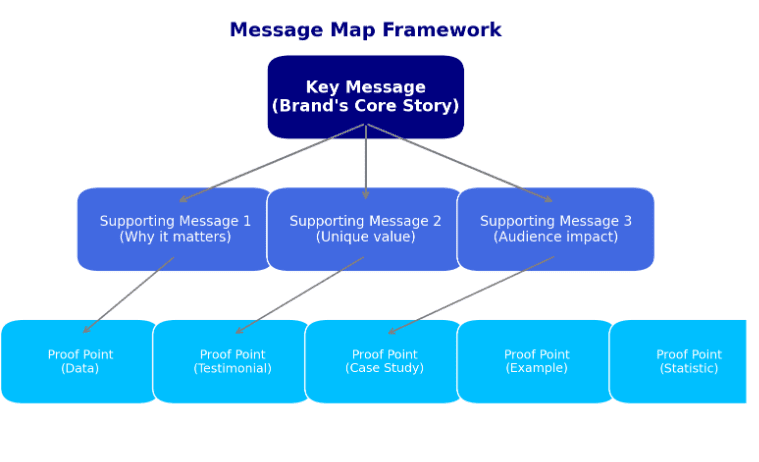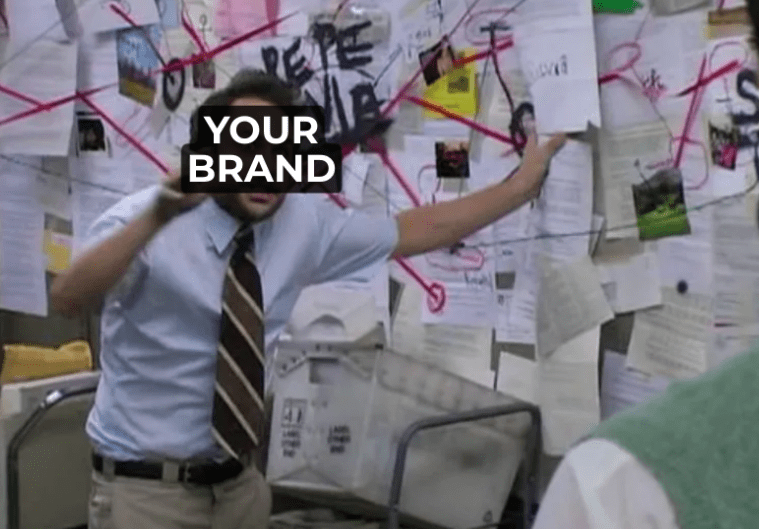Why Message Mapping is a Must-Have for Brands in the Philippines
We’ve seen it happen so many times: one wrong word from your brand during a launch or within a post, and suddenly people see you differently.
Instead of panicking, you will want to whip out your messaging guide so you know how to navigate a crisis.
Oh. Wait. You don’t have one?
Message mapping should fix that – a powerful tool every business should know about, and one that a seasoned PR agency in the Philippines can expertly execute.
Message mapping ensures your brand narrative stays sharp, unified, and adaptable, whether you’re speaking to the press, customers, investors, or even your own employees.
Related: PR Needs a Story NOT Just Talking Points
So, What Is Message Mapping?
Message mapping is a structured communication framework that helps organizations organize their key messages into a hierarchical, easy-to-remember format. Think of it as your brand’s cheat sheet for what to say, how to say it, and how to adapt it to different audiences without losing consistency.
At its core, a message map has three layers:
- Key Message (The Core Story): The big idea you want people to remember.
- Supporting Messages: Three to four main points that back up the key message.
- Proof Points: Facts, data, anecdotes, and examples that reinforce credibility.
This framework ensures that no matter who is speaking on behalf of the brand—whether it’s the CEO at a conference, or a marketing manager talking to press—the story remains aligned.
Why Message Mapping Matters in the Philippine Context
In the Philippines, where trust and reputation are everything, message mapping plays a critical role in strengthening credibility. Here’s why:
- Media Scrutiny: Local journalists value clarity and directness. A well-prepared message map makes interviews smoother and ensures your spokesperson doesn’t get derailed.
- Diverse Audiences: From Luzon to Mindanao, your message may reach stakeholders with different cultural and socioeconomic contexts. Message mapping helps adapt tone and emphasis while keeping the story consistent.
- Crisis Preparedness: Whether it’s a product recall, a viral social media backlash, or a regulatory issue, having a prepared map ensures your brand can respond quickly without contradicting itself.
The Benefits of Message Mapping for Brands
- Consistency Across Channels
In integrated marketing communications (IMC), every touchpoint must reinforce the same message. Message maps ensure that. - Confidence in Spokespersons
Many Filipino executives are not media-trained. A message map serves as their safety net during interviews, presentations, and Q&As. (PRO TIP: NGP IMC provides media training services!) - Faster Crisis Response
During a PR crisis, time is critical. A pre-approved message map helps brands respond within hours instead of days. - Improved Media Relations
Journalists dislike vague, confusing responses. A message map helps provide concise soundbites that make stories more quotable and publishable. - Internal Alignment
Employees are often your brand’s most powerful ambassadors. A message map ensures everyone from the boardroom to the frontlines communicates the same story.
How We Use Message Mapping
A PR agency in the Philippines, like NGP IMC, doesn’t just write messages. We ensure these messages are strategically aligned with your brand narrative and market realities. Here’s how:
- Discovery & Insight Gathering
Agencies work with leadership to identify core values, differentiators, and challenges. - Message Development
Translating insights into a hierarchy of messages and proof points that resonate with Filipino audiences. - Scenario Building
Preparing different versions of the map for product launches, advocacy campaigns, and crisis situations. - Training & Simulation
Coaching brand spokespeople to internalize the map, so responses sound natural, not scripted. - Ongoing Refinement
As campaigns evolve, agencies update the message map to ensure it remains relevant and effective. We stay agile!
Creating Your First Message Map: A Quick Guide
If you’re a brand leader or communications manager, here’s a simple starting point:
- Define your core message in one sentence.
- Identify three supporting points that explain why it matters.
- Add proof points (data, examples, testimonials).
- Test it with different stakeholders—media, employees, customers.
- Refine until it’s clear, compelling, and consistent.
Of course, while you can draft a basic map internally, a PR agency in the Philippines brings the strategic expertise, media know-how, and storytelling skill to make it truly effective.

Why Every Brand Needs a PR Agency for Message Mapping
It’s one thing to know what message mapping is.
It’s another to execute it effectively.
Brands often fall into these pitfalls when doing it alone:
- Overloading the map with too many points
- Focusing on product features instead of brand values
- Forgetting to tailor messages for different audiences
- Missing emotional storytelling in favor of dry facts
A PR agency helps balance clarity, brevity, and relatability, ensuring your message lands well with Filipino audiences and resonates across platforms.
We know that message mapping isn’t just a corporate exercise but a survival tool for brands navigating today’s complex media environment. This map or guide ensures consistency, builds confidence, and strengthens credibility, whether you’re celebrating a milestone or facing a crisis.
We’ll help you come up with that, and make sure that simple document works hard. It will be a living, breathing strategy that connects with people and protects your reputation.
Don’t just leave your brand message to chance. Partner with us and make message mapping your secret weapon for success.

Amy Ruth Valenzuela is a graduate of Far Eastern University, where she earned a Bachelor of Arts in Communication. With a strong passion for communications and media relations, Ruth has developed a diverse skill set that includes journalism, scriptwriting, events and production management, risk management, social media marketing, and layout and graphic design. Her experience in these areas has shaped her approach to storytelling and content creation, driving a commitment to excellence in every project. Ruth is dedicated to leveraging her expertise to create impactful narratives and foster meaningful connections in the industry.


